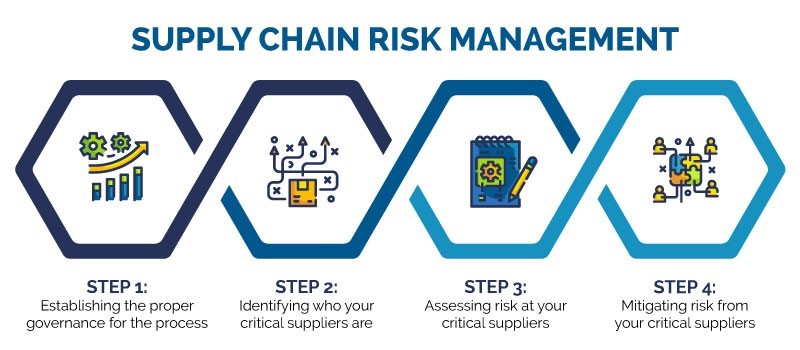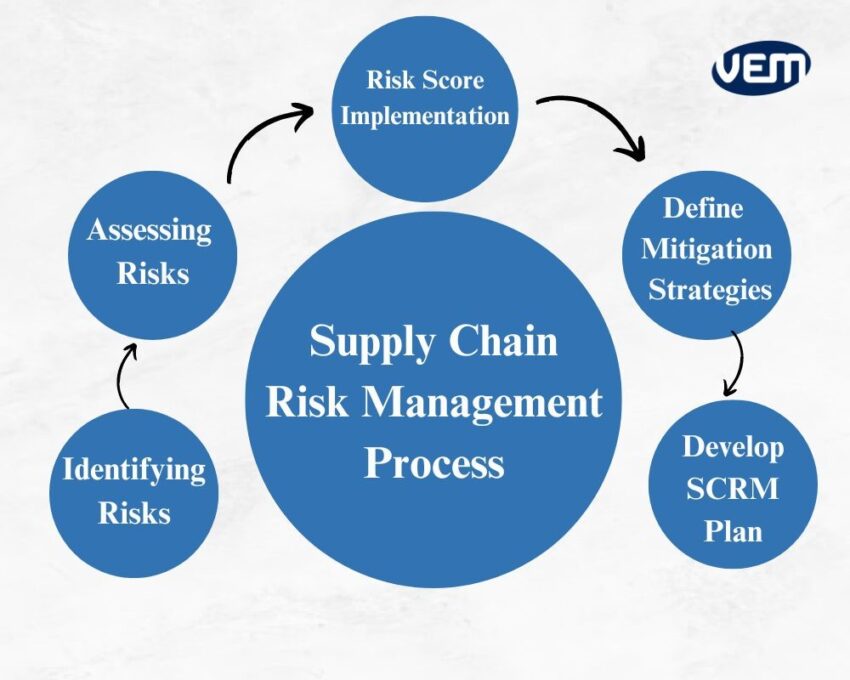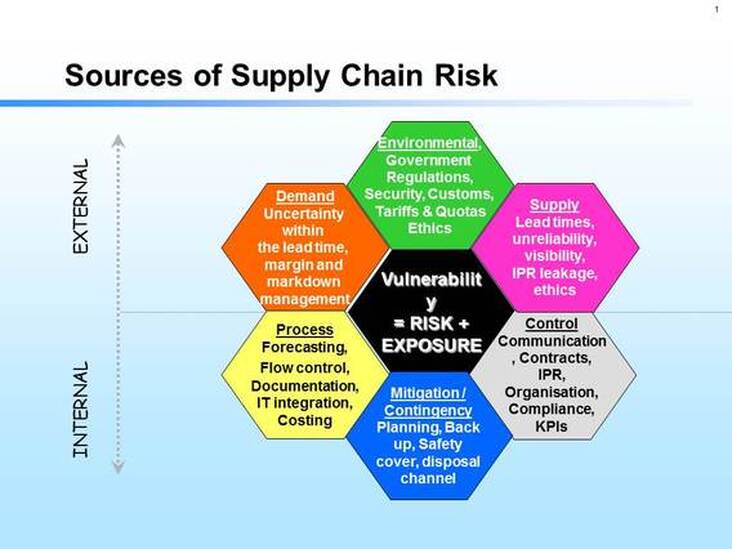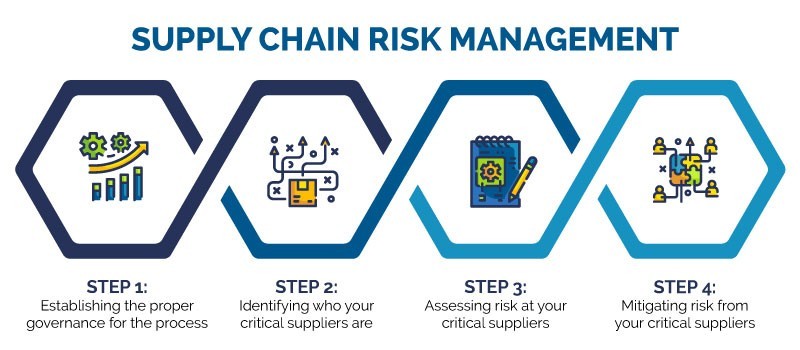# Supply Chain Risk Management: Strategies to Build Resilient Operations
In an increasingly globalized economy, **supply chain risk management (SCRM)** has emerged as a critical component of business strategy. Disruptions such as natural disasters, geopolitical tensions, and pandemics can cripple supply chains, causing operational inefficiencies and financial losses. This guide explores the essentials of SCRM, its importance, challenges, and strategies to mitigate risks effectively.

---
## What is Supply Chain Risk Management?
**Supply Chain Risk Management** involves identifying, assessing, and mitigating risks within the supply chain to ensure seamless operations. These risks may stem from various sources, including:
- **Natural events** such as hurricanes, earthquakes, or floods.
- **Market volatility** affecting raw material prices.
- **Cybersecurity threats** targeting supply chain systems.
- **Operational risks** like supplier failures or labor strikes.
By implementing effective SCRM strategies, businesses can minimize disruptions and maintain **competitive advantage**.
---
## Types of Supply Chain Risks
### 1. **External Risks**
External risks are unpredictable and often beyond a company's control. Examples include:
- **Natural disasters**
- **Political instability**
- **Economic fluctuations**
### 2. **Internal Risks**
Internal risks arise within the organization and include:
- **Inventory mismanagement**
- **Process inefficiencies**
- **Poor supplier relationships**
### 3. **Cyber Risks**
The rise of **digital supply chains** has introduced cybersecurity vulnerabilities, making data breaches and system hacks a significant concern.
---
## Why is Supply Chain Risk Management Important?
Investing in SCRM can yield numerous benefits for businesses:
### 1. Improved Resilience
A robust SCRM framework ensures **business continuity**, even during crises.
### 2. Enhanced Customer Satisfaction
Minimizing supply chain disruptions leads to timely deliveries, which builds **customer trust**.
### 3. Cost Efficiency
Proactive risk management reduces expenses associated with **last-minute solutions** and **loss recovery**.
### 4. Regulatory Compliance
SCRM helps businesses comply with **legal and ethical standards**, avoiding penalties.
---
## Key Steps in Supply Chain Risk Management
### 1. **Risk Identification**
The first step is to identify potential risks across the supply chain. This includes mapping all touchpoints and assessing vulnerabilities.
### 2. **Risk Assessment**
Evaluate the likelihood and impact of identified risks. Tools such as **risk matrices** can help prioritize high-impact risks.
### 3. **Mitigation Strategies**
Develop plans to address and mitigate risks. These can include:
- **Diversifying suppliers**
- **Stockpiling critical materials**
- **Investing in cybersecurity**
### 4. **Monitoring and Reviewing**
SCRM is an ongoing process. Regularly monitor risks and update strategies based on new data or market changes.

---
## Best Practices for Effective SCRM
To build a resilient supply chain, companies should adopt the following best practices:
### 1. Diversify Suppliers
Relying on a single supplier increases vulnerability. Work with multiple suppliers to reduce dependency and ensure continuity.
### 2. Embrace Technology
Leverage tools like **AI, machine learning**, and **IoT** for predictive analytics and real-time monitoring.
### 3. Build Strong Relationships
Maintain open communication with suppliers and partners. Collaborative planning can preempt potential risks.
### 4. Train Your Team
Equip employees with the skills and knowledge to handle disruptions effectively.
### 5. Focus on Sustainability
Sustainable practices like reducing waste and sourcing responsibly contribute to long-term risk mitigation.
> **Pro Tip**: Use predictive analytics tools to forecast potential disruptions and make data-driven decisions.
---
## Challenges in Supply Chain Risk Management
### 1. Lack of Visibility
A fragmented supply chain can make it difficult to track operations and identify vulnerabilities.
### 2. Rising Cyber Threats
As supply chains become more digitized, **cybersecurity risks** pose significant challenges.
### 3. High Costs
Implementing SCRM strategies requires investment in tools, training, and infrastructure.
### 4. Rapid Market Changes
Volatility in global markets can make it challenging to anticipate and respond to risks.
> **Related Resource**: [How Technology is Transforming Supply Chain Management](https://www.investopedia.com/terms/s/supply-chain-management.asp)

---
## Case Study: SCRM in Action
During the COVID-19 pandemic, companies with strong SCRM frameworks were better equipped to handle disruptions. For instance, businesses that had diversified their supplier base could quickly source materials from alternative regions, minimizing delays.
This highlights the importance of **proactive planning** and agility in supply chain management.
---
## FAQs About Supply Chain Risk Management
### 1. **What is the biggest risk in supply chains?**
The biggest risks often involve **disruptions in supply** due to external factors like natural disasters or geopolitical tensions.
### 2. **How can small businesses manage supply chain risks?**
Small businesses can focus on building **strong supplier relationships**, adopting affordable **technology solutions**, and maintaining a clear **risk management plan**.
### 3. **What tools are available for SCRM?**
Tools like **SAP Ariba**, **Oracle SCM**, and **Tableau** offer features for monitoring, analysis, and risk management.
### 4. **Why is cybersecurity important in supply chains?**
Cybersecurity ensures that sensitive data, such as customer information and supply chain logistics, remains protected from breaches.
---
## Conclusion: Building a Resilient Supply Chain
Supply chain risk management is no longer optional in today’s complex business environment. Companies must embrace **proactive strategies** to address vulnerabilities, enhance resilience, and ensure seamless operations. By investing in technology, training, and sustainable practices, businesses can turn supply chain risks into opportunities for growth.
> Ready to strengthen your supply chain? Learn more about [supply chain risk mitigation strategies](https://www.investopedia.com/terms/s/supply-chain-risk.asp) today.

